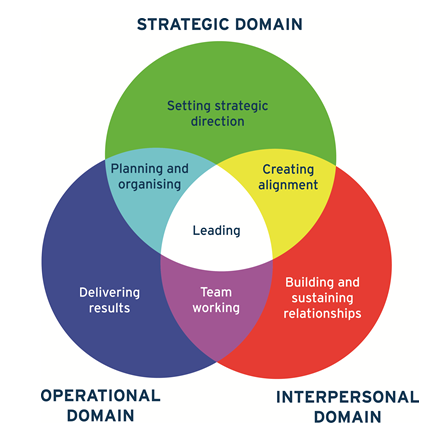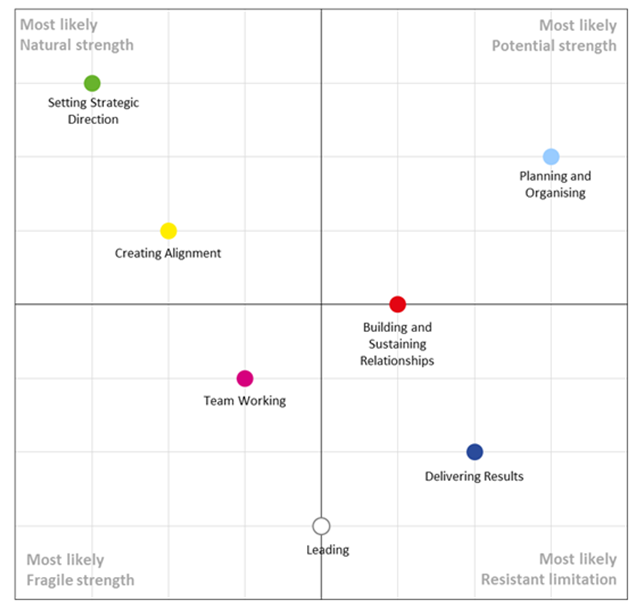All organisations need to work on strategy, operations and relationships; that’s not in question, but to help their organisations stand out and really compete leaders should decide which of these areas they’re going to major in and answer the question ‘what do we want to be famous for?’.
- Is it strategic focus; reading the market, predicting changes and seizing opportunities better than the competition? This is about doing things that others cannot.
- Is it operational focus; doing what many others do, but doing it better and more efficiently?
- Or is it relationship focus; winning through customer intimacy, culture and employee engagement?
Whichever focus your organisation chooses, it needs to be lived at the top for it to be authentic and sustainable, so it must align to personal strengths and interests in the leadership team. Where HR can make a difference is in helping leaders explore their natural tendencies and identify which sort of focus is likely to be most successful for them. To do this, you need a clear, simple language to define what the possible focal points are and a method to explore how leaders’ personalities align them to these focal points.
Primary Colours® Model of Leadership

To find out more about the Primary Colours® Model of Leadership, click here
The Primary Colours® Model describes seven leadership tasks under three domains. It differs from a competency model because it’s about what leaders need to DO, rather than about HOW they need to do it or what attributes they need. It’s simple, memorable and provides a clear language to use in leadership development, talent, team structure, recruitment and so on.
To look at where a leader’s ‘natural strengths’ lie in relation to this model we need to measure their underlying personality: how they are ‘wired’. Research has linked different personality traits to performance in various leadership tasks (e.g. Kaiser & Hogan, 2011).
But enough of the theoretical mumbo-jumbo! Let’s look at an example of an organisation that appears to be majoring in the natural strengths of its leader(s).
Google’s Strategic Focus
Google’s search engine is one of the most significant inventions of the modern technological age and it’s obvious that its business focus is on doing what nobody else has. Since its inception Google has continuously released new products; Gmail, Docs, Earth and the recent Google Glass and self-driving cars – all tied to Google’s underlying strategy: creating the biggest possible market to deliver ads.
Listening to Larry Page (Google’s co-founder and CEO), it’s not hard to see where Google’s strategic focus comes from. Larry is intellectually curious, analytical, forward thinking and not afraid of risk (you’d have to be to release a car that drives itself!). His strong open-mindedness also leads us to predict that he prefers to think big picture and long-term rather than getting tied down in the short-term delivery goals and close-monitoring of individual performance. He also talks of being shy and finding it difficult to build new relationships.
If we properly assessed Larry Page’s personality traits and applied them to the Primary Colours® Model to explore his natural strengths, we MIGHT see something like this:
Primary Colours® Strengths Matrix

To find out more about how the Primary® Colours strengths matrix is formed, click here
Let me first stress that unfortunately I haven’t had the opportunity to sit Larry Page down with some psychometric tests and have an in-depth discussion with him to come up with this assessment (but if your Google alert on your name means you end up reading this Larry, then I would love to do this for real!). So this is just an informed guess after a few hours of research (or cyber-stalking you might say!).
Playing along for a moment and assuming the above diagram is an accurate reflection of Larry’s strengths, how does this play out in his business focus?
Larry Page emphasises long-term thinking and creating an organisational culture that breeds constant experimentation. He was heavily involved in recruitment in Google’s early years so that he could ensure they were hiring the brightest, most inquiring minds. Now all Google employees, whether developers or not, are mandated to spend 20% of their time working on personal projects, anything they like. It’s claimed that a number of Google products have come from employees’ personal projects.
For Larry, analysis, creativity and risk taking come easy because they seem to be based in his personality traits. This means that when the going gets tough he’s able to sustain these qualities far better than those not naturally inclined in these ways. Larry, Sergey Brin and colleagues have built an organisation around these qualities and made Google famous for its strategic focus.
Google is just one example. We consider Amazon, led by Jeff Bezos, an example of supreme operational focus: it does something many others do (selling consumer products), but it’s famed for doing it better and more efficiently than the rest. We see Zappos, led by Tony Hseih, as an exemplar of relationship focus: a successful organisation famed in the US for its almost unilateral focus on making customers, employees and suppliers feel good about the relationships they have with Zappos.
Google, Amazon and Zappos have very different focuses but what they have in common is clear, unrelenting focus on their strengths which are manifestations of the character of their leaders.










